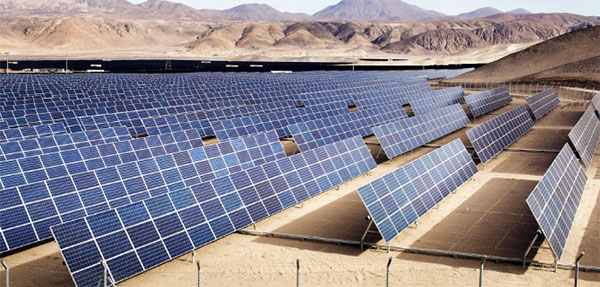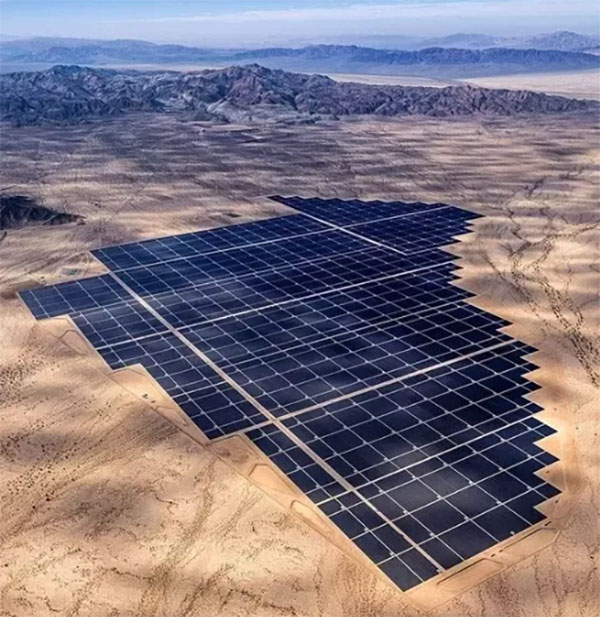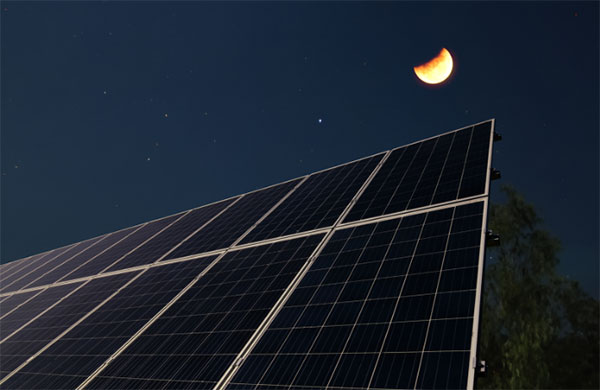Description
To determine if a solar panel is monocrystalline, check for uniform black cells with rounded edges and high efficiency ratings.

Identifying Characteristics of Monocrystalline Solar Panels
Monocrystalline solar panels are distinguished by their unique features, which are critical for optimizing solar energy utilization. Understanding these characteristics enables better decision-making when investing in solar technology.
Physical Appearance and Texture
Monocrystalline panels are recognizable by their uniform dark color, typically black or very dark blue. This homogeneity is due to the high-purity silicon used in their construction. The surface of these panels exhibits a sleek, smooth texture, with the individual solar cells showing a distinct rounded edge.
The uniformity in color and texture not only contributes to their aesthetic appeal but also indicates a high level of purity in the silicon, which is crucial for their efficiency. In terms of dimensions, these panels often come in standard sizes, but custom dimensions can be found depending on the manufacturer's specifications.
Color and Light Reflection
Monocrystalline panels are renowned for their
excellent light absorption capabilities. The dark surface plays a significant role in this, minimizing the reflection of sunlight and maximizing absorption. This feature is crucial as it directly influences the panel's efficiency, a key factor discussed in the context of
Solar Cell Efficiency on Wikipedia.
The surface's anti-reflective coating enhances this absorption, allowing for optimal performance even in conditions with lower sunlight.
This coating is meticulously engineered to balance durability with performance, ensuring the panels can withstand various environmental conditions without compromising their ability to absorb light effectively.
Their high efficiency in converting solar energy into electricity makes them a preferred choice for areas with limited space, as fewer panels are required to produce a significant amount of power. This efficiency also impacts the overall cost and value of the installation, making monocrystalline panels a long-term, cost-effective solution for solar energy needs.

Comparing Monocrystalline with Polycrystalline Panels
The debate between monocrystalline and polycrystalline solar panels centers around their structural differences and performance efficiencies. These factors play a pivotal role in determining the suitability of each type for various applications.
Structural Differences
Monocrystalline panels are made from a single, continuous crystal structure. This uniformity is achieved by slicing wafers from a single silicon crystal, as described in the
Monocrystalline Silicon section on Wikipedia. In contrast,
polycrystalline panels consist of multiple crystalline fragments fused together, giving them a distinct mosaic-like appearance with varying shades of blue.
Performance Efficiency
Monocrystalline panels are renowned for their higher efficiency rates, typically ranging between 15-20%. This efficiency is attributed to the high-purity silicon used, enabling them to produce more power per square meter. Polycrystalline panels, on the other hand, have efficiency ratings slightly lower, usually between 13-16%. The information on
Solar Panel Efficiency provides more insights into these figures.
The lifespan of monocrystalline panels also tends to be longer, with many manufacturers offering warranties of up to 25 years. Polycrystalline panels, while slightly less durable, still offer significant longevity, generally around 20-25 years.
In terms of cost, polycrystalline panels are generally more affordable, both in terms of initial investment and cost per watt.
to the overall lifecycle cost of solar panels, it's crucial for sustainable energy practices.

Comparing Monocrystalline with Polycrystalline Panels
The comparison between monocrystalline and polycrystalline solar panels revolves around their structural attributes and performance capabilities. To provide a clear understanding, the following table summarizes the key differences:
| Feature |
Monocrystalline Panels |
Polycrystalline Panels |
| Material Structure |
Made from a single silicon crystal, offering a uniform appearance |
Composed of multiple silicon fragments, resulting in a mosaic-like pattern |
| Efficiency |
Higher efficiency (15-20%) due to high-purity silicon |
Slightly lower efficiency (13-16%) |
| Cost |
More expensive initially but offers higher efficiency |
Less expensive, offering a cost-effective solution |
| Lifespan |
Longer lifespan, often with warranties up to 25 years |
Slightly shorter lifespan but generally around 20-25 years |
| Aesthetics |
Sleek and uniform, typically black or dark blue |
Varied shades of blue, with a less uniform appearance |
| Space Requirement |
Requires less space due to higher efficiency |
Requires more space for equivalent power output |
| Energy Conversion |
Excellent light absorption and conversion |
Good light absorption, slightly less efficient in conversion |
| Temperature Coefficient |
Better performance at higher temperatures |
Slightly reduced efficiency in high temperatures |
| Environmental Impact |
Higher energy input required in manufacturing |
Less energy-intensive manufacturing process |
Structural Differences
Monocrystalline panels feature a single, continuous crystal structure, resulting in a consistent and sleek appearance. This difference in structure directly influences their aesthetic appeal and application suitability.
Performance Efficiency
Monocrystalline panels excel in efficiency, converting more sunlight into electricity, which is particularly beneficial in areas with limited space. Conversely,
polycrystalline panels, while less efficient, provide a more budget-friendly option, making them suitable for larger installations where space is not a premium.

Understanding the Manufacturing Process of Monocrystalline Panels
The manufacturing process of monocrystalline solar panels is intricate and involves several key stages. Each stage is crucial in determining the quality, efficiency, and longevity of the panels.
Silicon Crystal Growth
Monocrystalline panels begin with the growth of a single silicon crystal. This process, known as the Czochralski method, involves:
- Melting highly purified silicon in a quartz crucible at temperatures exceeding 1,400°C.
- Introducing a seed crystal into the melt and slowly drawing it up, allowing a single crystal to form around it.
- Controlling the temperature and the rate of pulling to ensure uniform crystal growth.
This method produces high-purity silicon ingots, which are essential for high-efficiency solar cells. The
Czochralski Process page on Wikipedia offers detailed insights into this technique.
Panel Cutting Techniques
Once the silicon ingot is formed, it is sliced into thin wafers, a critical step in solar panel manufacturing. This process involves:
- Using precision cutting tools, such as wire saws, to slice the ingot into wafers, typically 200 to 300 micrometers thick.
- Ensuring minimal wastage of silicon during cutting, which is crucial for cost efficiency.
- Polishing the wafers to remove any damages or imperfections caused during cutting.
Each wafer is then transformed into a solar cell. This transformation includes:
- Diffusing n-type and p-type dopants to form a p-n junction.
- Applying anti-reflective coatings to enhance light absorption.
- Adding electrical contacts to enable electricity flow.
Methods to Verify the Type of Solar Panel
Determining the type of solar panel you have is crucial for understanding its performance, maintenance needs, and overall value. There are specific methods to verify whether a solar panel is monocrystalline or polycrystalline.
Label and Documentation Review
The first step is to review the label and documentation of the solar panel. This includes:
- Checking the manufacturer's label on the back of the panel for specifications like type, model, power rating, and efficiency.
- Reviewing the user manual or specification sheet provided by the manufacturer.
- Identifying key information such as the panel's power output (measured in Watts), efficiency percentage, and physical dimensions.
These documents often contain detailed information about the materials used, lifespan expectations (typically around 25-30 years for monocrystalline panels), and performance metrics under various conditions.
Professional Inspection Techniques
Professional inspections offer a more technical approach to identifying the panel type. This involves:
- Examining the physical characteristics of the solar cells. Monocrystalline cells have a uniform black hue and rounded edges, while polycrystalline cells have a bluish tone with a speckled mosaic pattern.
- Using specialized equipment to measure the panel's efficiency and output. This can confirm if the performance aligns with typical monocrystalline panel ratings.
- Inspecting the panel's construction and quality. Monocrystalline panels typically have a higher build quality due to the materials and manufacturing processes used.
Maintenance and Longevity of Monocrystalline Panels
Proper maintenance and understanding the longevity of monocrystalline solar panels are essential for ensuring their optimal performance and maximizing their lifespan. These panels, known for their efficiency and durability, require specific care practices and considerations.
Cleaning and Care Practices
Regular cleaning is crucial to maintain the efficiency of monocrystalline panels. Key practices include:
- Gently washing the panels with water to remove dust, dirt, and bird droppings. Avoid using abrasive materials or harsh chemicals that can damage the surface.
- Clearing debris like leaves and snow that can block sunlight and reduce efficiency.
- Checking for any shading from trees or buildings and pruning or adjusting as necessary to ensure maximum sun exposure.
- Inspecting the panels periodically for any damage or wear and tear, especially after extreme weather events.
Following these cleaning practices ensures the panels operate at their maximum potential, thus providing the highest possible energy output.
Durability and Lifespan Considerations
Monocrystalline solar panels are renowned for their long lifespan and durability. Important aspects include:
- Most monocrystalline panels come with a lifespan of 25 to 30 years. However, they can continue to function beyond this period, albeit at reduced efficiency.
- They are designed to withstand harsh weather conditions like high winds, heavy snow, and extreme temperatures. This robustness is crucial for maintaining performance over the years.
- The degradation rate of monocrystalline panels is typically around 0.3% to 0.8% per year, meaning they retain a significant portion of their efficiency over their lifespan.

Technological Features Unique to Monocrystalline Panels
These features play a pivotal role in their widespread popularity in various climates and applications.
Energy Conversion Rates
Monocrystalline panels are known for their high energy conversion rates. Key aspects include:
- They typically boast efficiency rates between 15% to 20%, some even reaching up to 22%. This efficiency means more electricity generation per square meter of panel.
- The high-purity silicon used in monocrystalline panels is primarily responsible for this superior performance. The fewer impurities in the silicon, the better the solar cell can convert sunlight into electricity.
- These panels require less space to generate the same amount of power compared to other types of solar panels, making them ideal for residential areas or locations with limited space.
The high efficiency also implies that over time, despite the higher upfront cost, monocrystalline panels can be more cost-effective due to more energy production.
Adaptability in Different Climates
Monocrystalline panels are remarkably adaptable in various climatic conditions.
- Their performance in hot climates. While all solar panels suffer efficiency losses in high temperatures, monocrystalline panels generally have a lower temperature coefficient than their polycrystalline counterparts. This means they perform better and lose less efficiency in hot conditions.
- Durability in harsh weather.
- Effectiveness in low-light conditions. Monocrystalline panels can perform relatively well during overcast or low-light conditions, making them suitable for areas with less consistent sunshine.








